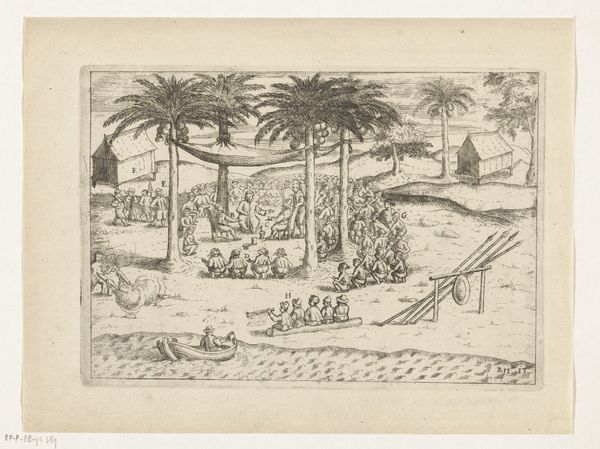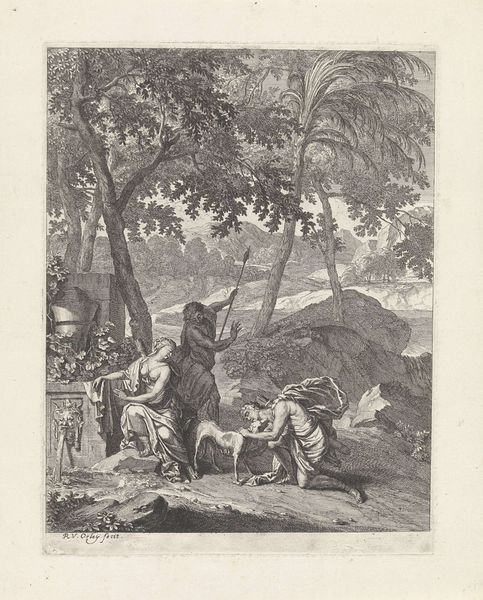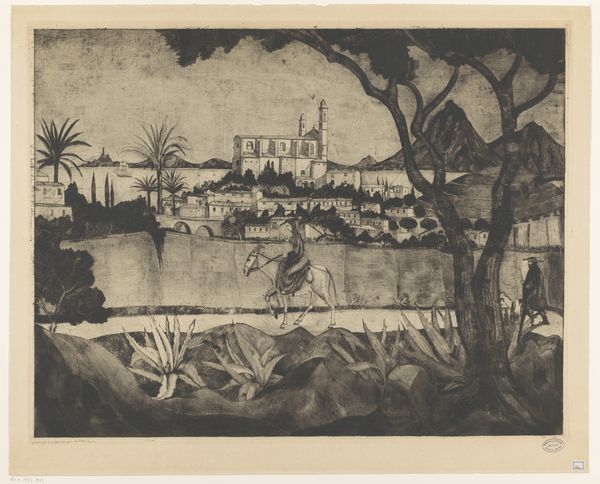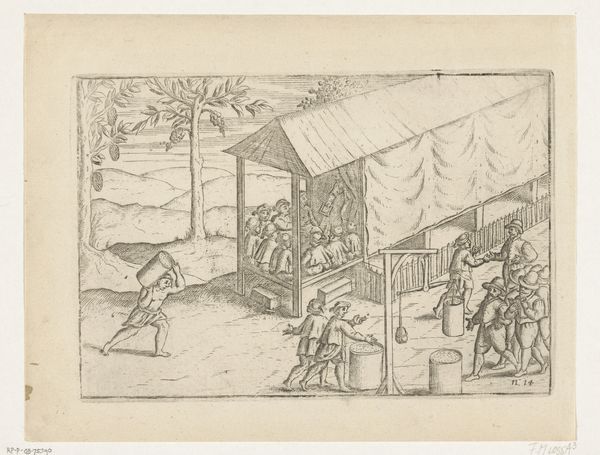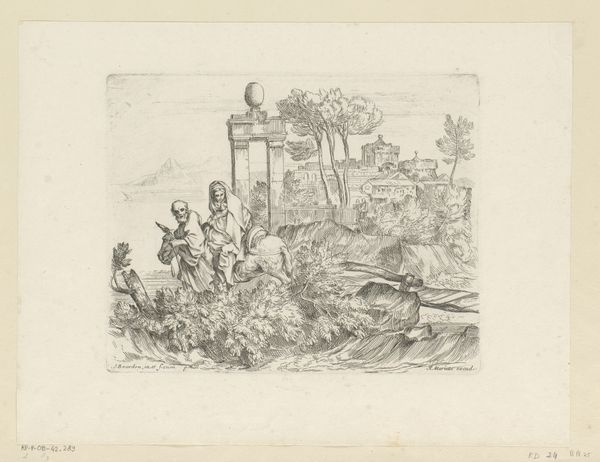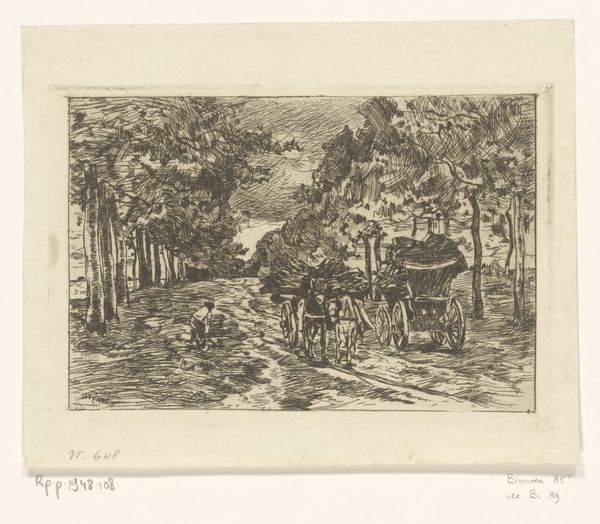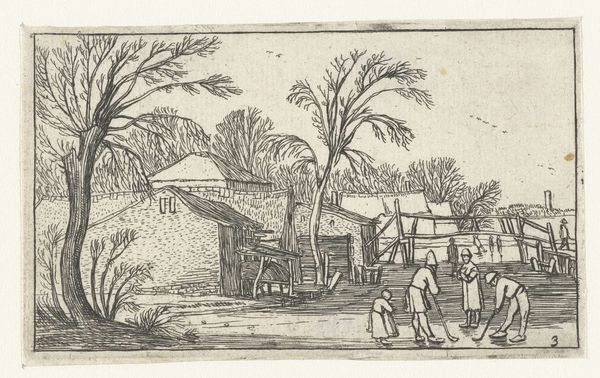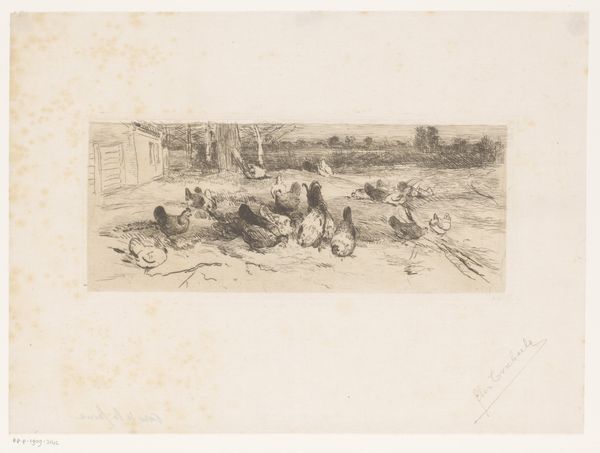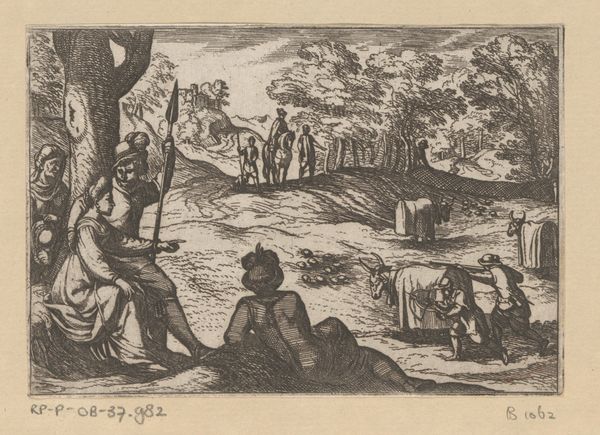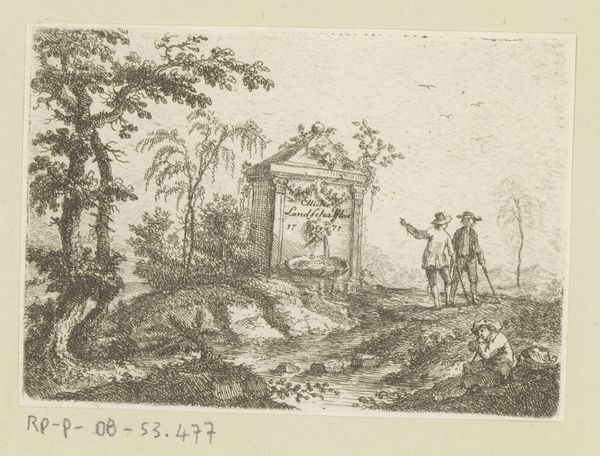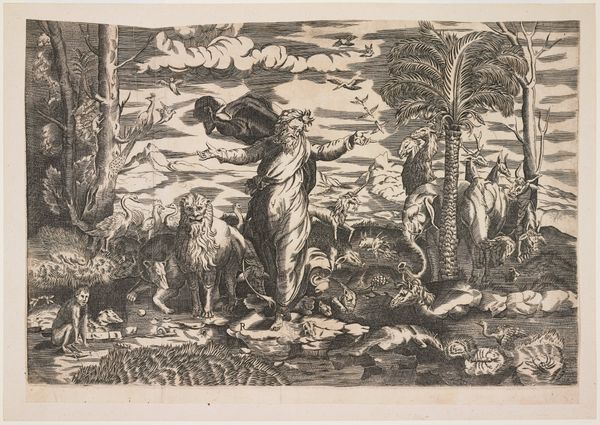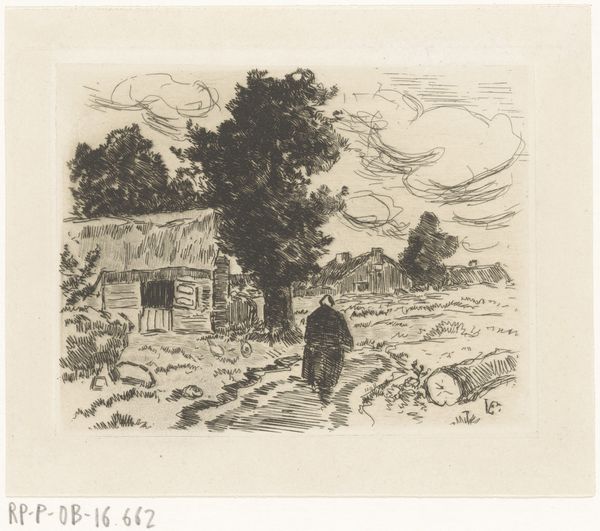
print, etching
# print
#
etching
#
landscape
#
figuration
#
neo-expressionism
#
surrealism
Dimensions: height 248 mm, width 296 mm
Copyright: Rijks Museum: Open Domain
Editor: Lodewijk Schelfhout’s etching from 1923, "Twee mannen die in een tuin een man dragen," depicts a rather strange scene of two men carrying another in a landscape that feels both biblical and exotic. The detail in the etching is striking. How should we read into this unusual composition, keeping in mind Schelfhout's background? Curator: Well, first, observe the printmaking process itself. The labor-intensive etching emphasizes a deliberate engagement with materiality. Notice how the artist meticulously carved the lines to depict not just the figures, but the very *stuff* of the landscape—the rough textures of the plants, the built forms, and even what looks to be a dead figure in the foreground. Does it seem like it's re-purposing earlier biblical narratives? Editor: It does, though distorted through this very expressionistic lens, but what can we make of this almost unsettling combination of classical and…well, modern angst? Curator: Consider the social context. Schelfhout worked during a period of upheaval, when traditional values were being challenged, and industrialization had significantly altered life. His chosen medium—printmaking—suggests accessibility and reproducibility. Does that resonate? It could then imply critique of exclusivity within the fine art world itself, bringing into question these values in the Post War society. What do you think of the neo-expressionistic aspect? Editor: That is interesting, it takes on a much more social approach, like his values of accessibility are very visible through the prints medium he is using, therefore becoming more inclusive with a narrative and critical twist? Curator: Exactly, and do the depicted materials—the landscape itself—play a symbolic role within that narrative? Editor: Right, thinking about the choice of materials used in this landscape and the social context creates a whole new layer to the artwork’s reading. It has shifted my thinking quite a bit. Curator: Indeed. Examining materiality offers valuable insight to art history and artistic expression, helping in shaping my perspective and the world around us.
Comments
No comments
Be the first to comment and join the conversation on the ultimate creative platform.


